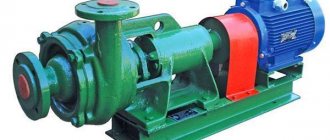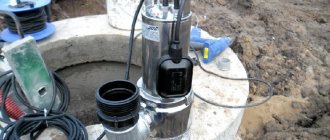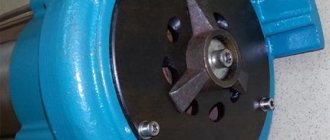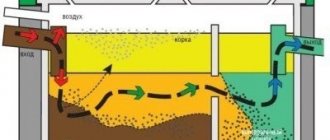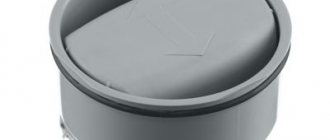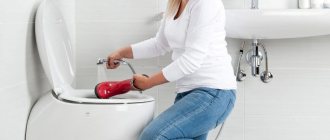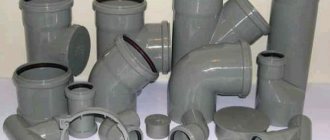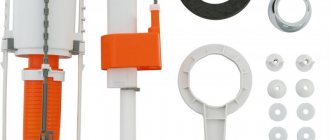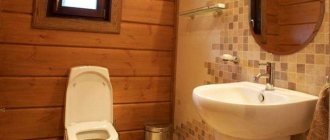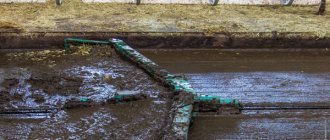Not everyone wants to work on equipping an internal bathroom with a drain hole in a country house. Many people are also unhappy with constant trips to the toilet in the yard. In recent years, an alternative has emerged - bio-toilets installed directly indoors.
The peat toilet fillers they use can eliminate the smell and the need for constant waste removal. In this article we will talk about the principle of operation of toilet fillers, consider their composition, and also make a comparative review of the most popular peat fillers.
Why do you need peat filler?
People who bought peat filler for a dry closet do not think about the number of useful functions that this mixture performs. You need to know everything about the capabilities of this product in order to use them with maximum economic benefit and efficiency.
The main objectives of peat mixtures for dry toilets are:
- Inhibition of the development of pathogenic bacteria and insect larvae in waste.
- Removing the unpleasant odor of ammonia and hydrogen sulfide in the bathroom.
- Liquid absorption.
- Biochemical processing of organic substances by bacteria.
Bacterial additives to dry mixtures contain special strains of microorganisms that process human waste to form sludge and water. As a result, even the possibility of the appearance of ammonia and hydrogen sulfide odors is eliminated.
During the activity of bacteria, high molecular weight organic substances are processed into low molecular weight ones, which are an excellent substrate for the production of natural fertilizers. Immediately after cleaning the peat toilet, the resulting biomass cannot be used in the garden - it must undergo a composting process for at least 1 year.
Image gallery
Photo from
Improving sanitary and hygienic conditions
Odor and insect remover
Obtaining environmentally friendly fertilizer
Use of recycled waste in the form of compost
There are other general economic uses of peat filler for dry closets.
The mixture can be used as:
- Substrate for storing root vegetables in the cellar.
- Animal potty filler.
- Above-ground protection of plant root systems in winter.
All options are popular due to their security.
Peat filler can be sprinkled on both tree trunks and flower stems to retain moisture in the soil and prevent the growth of weeds
There are many more useful ways to use peat filler in the country than you might think. These mixtures not only perfectly cope with their functions in dry closets, but can also be used for additional household needs.
Principle of operation
The peat toilet consists of two parts. The first part is a seat, a lid and a tank into which peat is poured. The second part plays the role of a container for collecting waste. For models used in the country, modifications are made in which there is an internal additional capacity. Thanks to its shape, it greatly simplifies the process of cleaning the toilet.
Do-it-yourself septic tank from Eurocubes
The operating principle is simple. When all the work is completed, waste products are sprinkled with a peat mixture. This can be done either with a special dispensing mechanism, or manually with any spatula. Liquid waste passes through the drain hose and is discharged outside the toilet. To do this, you can use various containers, or, if space allows, lower them into a cesspool. The absence of odor is guaranteed by the built-in ventilation pipe. Its height, to achieve maximum efficiency, should be at least 2.5-3 meters.
Tip 1: High-quality ventilation depends on the vertical installation of the pipe. No bends should be made. Read about the features of installing a ventilation pipe.
When using this type of toilet on the site, you need to remember about negative temperatures. This sewage system is most effective in warm climates. This is due to the work of bacteria. When processing waste, they have their own operating temperature limits. When it's cold outside, the effectiveness of bacteria drops sharply. Also, frost outside can cause the water in the drainage pipe to freeze. Therefore, if you plan to use the toilet all year round, both in warm and cold weather, then you need to consult with specialists and make changes to the installation of the sewer system.
Tip 2: During the construction of a major peat toilet, it is advisable to use varnish and paint for external work, this will extend the service life of the entire structure.
Advantages and disadvantages of mixtures
Before purchasing a dry closet with peat fillers for your dacha, it is recommended that you familiarize yourself not only with the positive aspects of these mixtures, but also with the disadvantages. There are undoubtedly more positive aspects.
These include:
- absence of unpleasant odors;
- good sorption properties;
- environmental friendliness;
- the ability to use waste as fertilizer;
- preventing the proliferation of pathogenic microorganisms and insects;
- long shelf life of mixtures;
- ease of cleaning the waste tank.
It is also worth mentioning frost resistance - a relevant property for northern regions.
After emptying the waste tank, it should be washed with detergent to flush out potentially harmful bacteria and fungi.
The listed advantages allow peat mixtures to constantly win new shares in the country toilet market thanks to word of mouth.
These fillers are not without a number of disadvantages:
- The need for constant purchase and delivery of peat mixture.
- Inoperability of the toilet without filler.
- Limited shelf life, especially in mixtures with bacterial additives.
These disadvantages are not a problem if there is free delivery of peat mixtures in the region or if a person has his own car in which he periodically travels to the city. The purchase of one 50-liter bag should be enough for several months of using the dry closet.
Criterias of choice
How to choose suitable peat for a dry closet? Today, the market is filled with a variety of formulations with different components and functionality. When purchasing, you need to consider several nuances:
- the ability to turn processed sewage into fertilizer for your garden plot. These include mixtures with live bacteria;
- the presence of high-moor and calcareous peat;
- percentage of sawdust;
- presence of bacteria and bioadditives;
- moisture absorption;
- waste pressing;
- consumption.
Each of these properties is responsible for the comfortable use of a peat toilet for a long time.
There are a huge number of devices and autonomous sewers on sale. They are chosen based on personal preferences, free space in the room and the number of functions. For a dacha or a private home, a dry closet will be a real salvation, plus it will be possible to fertilize the area without extra costs.
Tips for calculating peat filler
There are no uniform standards for determining the level of consumption of peat filler. The more you use it, the less unpleasant odors there will be, but financial costs will also increase.
The consumption of the mixture is important to consider when purchasing a dry closet. If a whole family is planned to live in the house, then it is better to buy larger equipment that will need to be cleaned once a month. When cleaning a large tank, you don't have to move its imposing structure outside.
You can portion out and remove waste biomass without worrying about unpleasant odors.
For a family of three, loading a 6-liter peat container is enough for 2 days, so refilling the dry closet needs to be done much more often than cleaning
The recommended amount of mixture for use after each visit to the toilet is 200-300 ml. Based on this norm, a 50-liter bag should be enough for a month with two people using the toilet every day. The indicated volumes of use of peat filler can vary greatly, depending on the method of nutrition, weight and age of the residents.
How to choose what to pay attention to
A flush toilet has two cisterns. Water or a flavored product is poured into the upper tank, and the lower tank is filled with a reagent, the main task of which is to ferment and purify the contents of the tank.
The choice of reagent depends on several factors:
- – at what air temperatures is it planned to use the dry closet (there are winter and summer splitters);
- – type of dry closet (liquid or peat);
- – desire to use waste for compost (biological and chemical reagents are distinguished);
- – frequency of use of the dry closet (will help to estimate the amount of special equipment spent and, accordingly, its cost).
Comparison of popular brands of peat fillers
The basis of all peat fillers for dry closets is high-moor peat, but additional additives greatly affect the quality of the final product. The compositions of the most popular mixtures will be discussed below.
Mixture No. 1 – Kekkila (Finland)
The company produces two types of mixtures: Kekkila and Kekkila Hajusieppo.
The Kekkila Hajusieppo mixture consists of 60% high-quality high-quality sphagnum peat and 40% dry sawdust. Packaged in perforated bags of 50 liters. The whole of each package is 15 kg. The recommended mass ratio of filler and waste is 1:2.
The financial benefits of a good peat mixture can only be noticed with long-term use and focusing on the level of unpleasant odors
The Kekkila mixture consists of 60% high-moor sphagnum milled peat with a low degree of decomposition, 20% dry sawdust and another 20% pine bark. Packaged in perforated bags of 50 liters. The whole of each package is 10kg.
The recommended ratio of filler to waste mass is 3:5. Due to the use of pine bark, the percentage of moisture absorption is slightly reduced, but the looseness and flowability of the mixture increases with a large amount of liquid waste. Ventilated packaging prevents the mixture from caking and prevents the development of putrefactive bacteria in it.
Thanks to the use of dried sawdust, the percentage of moisture absorption in fresh mixtures reaches 80% of their original mass. Such indicators increase the effectiveness of the filler. Therefore, despite the price of a 50-liter package of 550-600 rubles, the long-term financial costs of maintaining a dry closet are lower compared to cheap mixtures.
The manufacturer does not recommend storing the product at subzero temperatures because it loses its sorption properties. After defrosting, the characteristics of the filler are restored. In large dry closets, it is recommended to stir the mixture in order to enrich it with oxygen and prevent rotting processes.
Mixture No. 2 – Piteco (Russia)
The peat fillers of this company are produced from Russian high-moor peat with a low degree of decomposition from the sphagnum group using Swedish technology. Coniferous sawdust was added as a leavening agent, and dolomite flour was added as a deoxidizing agent. It also contains enzymes and microorganisms that accelerate the composting process.
This peat mixture is an excellent example of a combination of Russian raw materials and proven foreign technologies. As a result, one of the best peat fillers on the domestic market was obtained
Typically, bacteria are sold in separate packaging so that they do not begin the process of biodegradation of the filler while still in packaged form. But Piteco decided to simplify the maintenance of the dry closet and created a technology that made it possible to combine peat, sawdust and bacteria without compromising product characteristics.
The price of peat filler is 400-450 rubles per 50 liters or 15 kg. Peat mixtures from this company are an excellent choice for budget-conscious people.
Mixture No. 3 – Biolan (Finland)
This manufacturer extracts peat in Finland, and processes and packages the finished product in Estonia. The mixture is made from high-moor peat, clean crushed bark and sawdust from coniferous trees. The recommended ratio of waste to filler is 2:1.
Foreign peat fillers should be treated critically. If the price is high, then it is imperative to read the composition so as not to buy ordinary peat at the price of a high-quality mixture
If an unpleasant odor appears from the dry closet or excessive moisture in the mixture in the waste tank, you need to increase the consumption of the mixture by 25-30%.
There are no bacteria in the mixture, although its cost due to European production and Russian import taxes is much higher than that of Piteco. The cost of a 40-liter package is 520-570 rubles. The filler should be stored in a dry, warm place and be sure to close the packaging tightly if it is not used immediately.
The mixtures from this manufacturer are quite expensive, but their quality is also high.
Mixture No. 4 – PeterPeat (Russia)
PeterPit mixtures consist of crushed purified peat of Russian origin without additives. The shelf life is 3 years, although due to the lack of additional components, the mixture should not lose its properties even after a longer period.
Many Russian manufacturers of peat fillers make beautiful packaging and unreasonably inflate the price of their products, so choose a product based on its composition
The manufacturer recommends storing the mixture at temperatures from -35 degrees below zero to +40 degrees above zero. If the filler has been stored in the cold, it must be thawed before use. The cost of a 50-liter bag is 500-550 rubles, which is expensive for a mixture without any additional additives.
There are many other small producers of peat fillers on the Russian market, whose prices start at 300 rubles for a 50-liter package. Cheap litters are often made from transition peat and contain no additives. Because of this, the mixture formed in the dry closet has a lumpy structure, is prone to rotting and smells bad.
The most affordable companies in terms of price/quality ratio are Kekkila and Piteco, which offer proven quality at a good price.
Which reagent to choose for a dry toilet?
When choosing a disinfectant that would ensure the sanitary stability of a dry closet and meet the requirements of its owner, you should pay attention to:
- composition, which determines the type of drug, and therefore the conditions for its use;
- consumption rate, which will allow assessing affordability;
- frequency of use and method of emptying the tank to estimate the treatment time of the composting toilet.
EcoProm ROSTOK Standard
EcoProm ROSTOK Standard
EcoProm ROSTOK Standard
Composting peat dry closet weighing 11 kg with a body made of chemically inert polyethylene. The body volume of 100 liters is complemented by a dispenser with a capacity of 30 liters with overall dimensions of 79x82x61.5 cm.
The seat height is 50.8 cm, the set includes a peat spreader, compensator, seat with cover, coupling, drainage fitting and plug. A ventilation pipe with a diameter of 5 cm is installed after installing the housing.
PROS:
- low price
- compact and ergonomic shape
- able to operate within a temperature range of -30 to +60 degrees
MINUSES:
- difficulties with assembling and installing the toilet lid
- thin fragile plastic
Garden sprayer | TOP 10 Best: a selection of models for home use + Reviews
